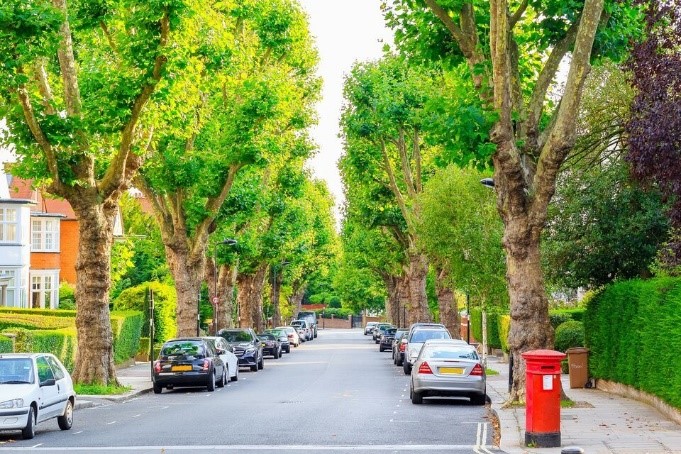Insights
‘Climate risk is investment risk’: part 3.
Nature-based solutions: cleaning the air we breathe.
This is an ongoing insight series that looks at the opportunities of nature-based solutions. See part 1 & 2 here.
It should come as no surprise that poor air quality is one of the major issues that the built environment faces today. The high levels of air pollution experienced in urban areas have resulted in widespread exceedances of both the particulate matter (PM) and nitrogen dioxide (NO2) air quality objectives (AQOs) across the UK, despite air quality action plans being in place to prevent this.
This presents a serious threat not only to the environment but to human health and wellbeing.
In the UK alone every year, approximately 40,000 lives are being cut short whilst the health impact cost is estimated to be more than £20 billion.
This highlights the need for an improved and more innovative solution that will help to improve the air quality in urban areas and support us in moving beyond mere compliance with the AQOs – as there is no safe limit to be exposed to these pollutants.
A multi-faceted, nature-based approach can help further improve air quality when embraced alongside other more traditional pollution reduction measures, like sustainable travel plans, that are often considered in isolation.
Air quality improvement measures in the UK are in part decided on an individual site by site basis, which can be disjointed when compared to a coordinated approach at a city-wide level. When this is considered alongside the fact that there is no safe limit to be exposed to these pollutants, the result is there is a great deal of further room for improvement.
The nature-based approach to improving air quality.
Some of the most commonly referenced nature-based solutions in our built environments are green walls, green roofs, and vegetation barriers. These can help in the reduction of pollutants in the air through deposition, dispersion and absorption.
The effectiveness of each of these mechanisms in reducing air pollution varies and is influenced by a combination of factors, which include:
- Vegetation species
- Vegetation characteristics
- Pollution concentration
- Pollutant
- Wind direction and velocity; and
- Urban environment characteristics e.g. enclosed, open
The influence of these factors in improving air quality varies throughout the year. The life cycle of the leaves, with their expansion and fall, varies across different vegetation species, and has an impact on the characteristics of the vegetation. Pollution concentrations, wind direction and wind speed also change due to seasonal variations throughout the year.
The movement of air and pollutants in an urban environment can be extremely complex. When considering air quality and the effectiveness of nature-based solutions as an approach to improving air quality both the mechanical and chemical processes at play must be taken into account.
The mechanical process of pollutants being transported through a space can be influenced by the presence of structures / vegetation – with deposition and dispersion being mechanisms by which air quality can be improved. Alongside this the chemistry of these pollutants and how they interact with vegetation also need to be considered – with respect to absorption.
In this insight, we’ll first look at deposition:
Pollutant deposition.
Vegetation barriers like trees and hedges are often referenced to act to ‘filter’ pollutants, which is applied and seen as beneficial when placed as a barrier between vehicles and pedestrians with pollutants being intercepted and deposited on the vegetation.

The thicker, denser and higher the vegetation barrier, the greater the amount of ‘filtration’, which can lead to a lower level of pollution. Studies have suggested that filtration efficiency for particles larger than 20nm is less than 5% when vegetation is 1m thick and leaf area density is 5m2/m3 but is 50% when vegetation is 10m thick during certain weather conditions.
Green walls can also have a similar effect, with increased deposition occurring during periods of lower level of dispersion as the contact time is increased. Green roofs also have a role to play– however the proximity from the pollution source, like road traffic, to these systems needs to be considered. How effective these systems can be at mitigating a pollution source in order to reduce the exposure of those in that locale versus the improvement at a city level is also a consideration.
Of course, deposition is not the only mechanism by which nature can influence air quality; both dispersion and absorption have roles to play which also need to be considered when assessing the effectiveness of various vegetation structures.
Check out part 4 where we look at dispersion and absorption.
